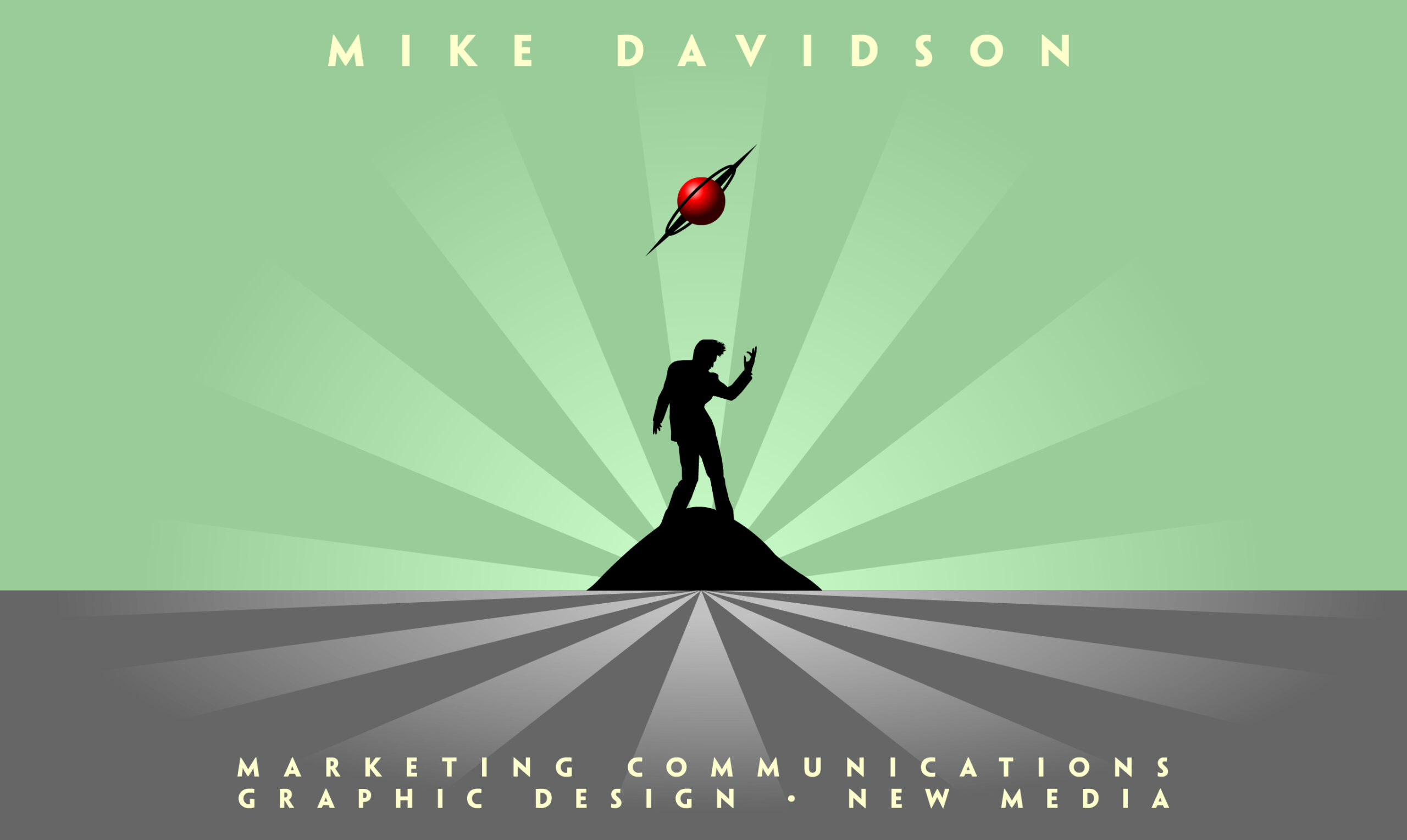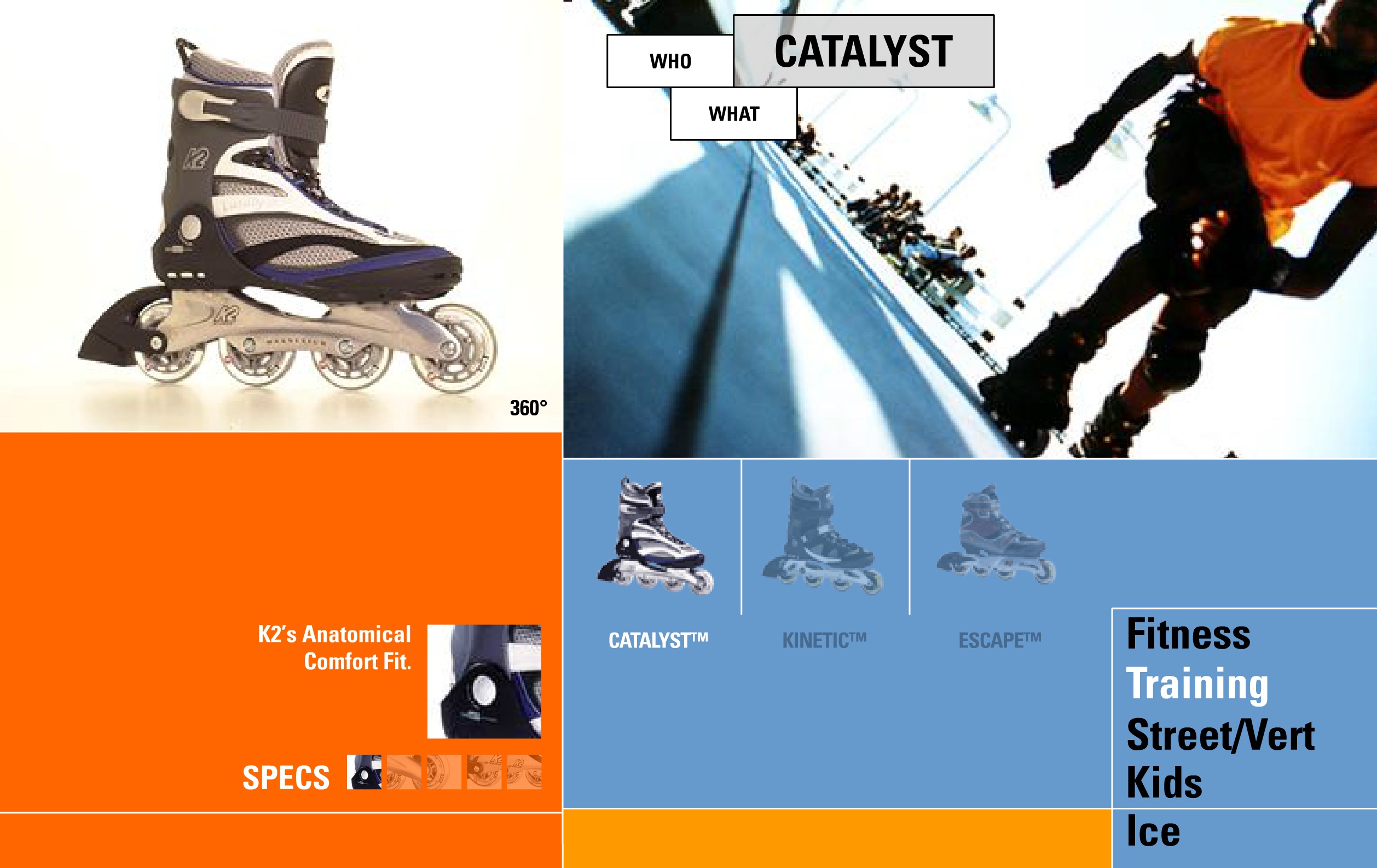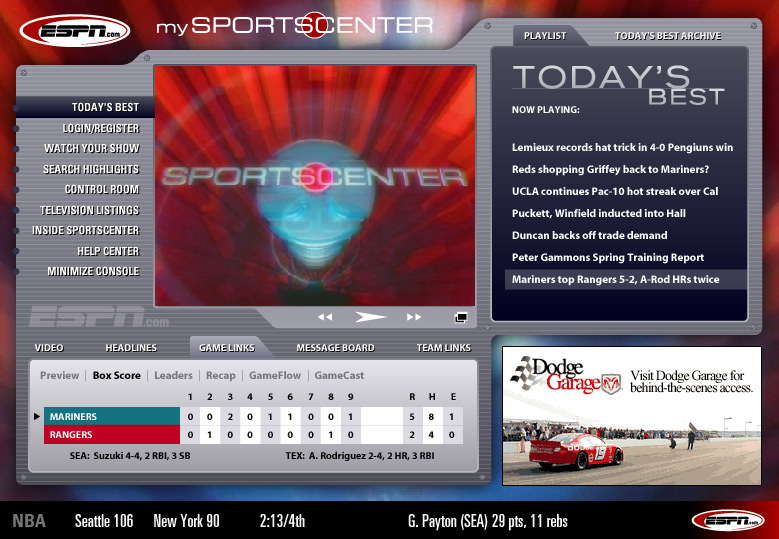Here Lies Flash
In just a few short days, on December 31, 2020, we will say our final goodbyes to one of the most important internet technologies that ever lived: Flash.
I remember vividly the first time I saw Flash on a computer screen. It was 1997, I was finishing up college, and I had managed to teach myself enough HTML to think about pivoting from print design to interactive design as a career.
Web design, at the time, was a clumsy beast. Most web sites were essentially Times New Roman black text on a grey background with an occasional low-quality image here and there. The “design” part was often just figuring out how to best organize information hierarchies so users could feel their way around.
Once we got bored of basic HTML (there was no CSS at the time), we started doing unholy things with images. We’d set entire pages in Photoshop, slice our layouts into grids of smaller images, and then reassemble everything into a clickable mess. These were dark times.
My college, having invented PINE, was considered “on the front edge” of the internet at the time. Here’s is what our site looked like back then:

Even the most beautifully designed sites felt a bit lifeless, and once someone came up with a new layout that worked well, everyone would just ape it. To make matters worse, every new advancement in methods required more convoluted hacking to display correctly across Netscape, Internet Explorer, and every other fringe browser in use at the time. It was a total mess.
Here is the first version of Zeldman.com I could find, from 1998. Amazing for the era, and holds up impressively in a nostalgic, cyber-Americana sort of way, but you can see how limited we were by screen widths, color palettes, and layout technologies.

Then one day in 1997, I clicked on a link to Kanwa Nagafuji’s Image Dive site and the whole trajectory of web design changed for me. It looked like nothing I had ever seen in a web browser. A beautiful, dynamic interface, driven by anti-aliased Helvetica type and buttery smooth vector animation? And the whole thing loaded instantly on a dial-up connection with nothing suspicious to install? What was this sorcery? Sadly, I can’t find any representation of the site online anymore, but imagine the difference in going not just from black-and-white TV to color TV, but from newspaper to television.
Nagafuji’s work was such a huge, unexpected leap from everything that came before it that I had to figure out how it was done. A quick View Source later revealed an object/embed tag pointing to a file that ended in “.swf”. A few AltaVista searches later led me to the website of Macromedia, makers of ShockWave Flash (“SWF”), the technology that powered this amazing site.
I downloaded a trial version and was blown away at the editing interface. Instead of a shotgun marriage of Photoshop, HTML, browser hacks, and a bunch of other stuff that felt more like assembly than design, here was a single interface to lay out text, shapes, images, and buttons, and animate everything together into an interactive experience! It was magic.
After mucking around in the Flash editor (version 2 at the time) for a few hours, I did what every self-respecting web designer would do and immediately set out to find other cool stuff to copy. Over the course of the next several months and years I would find such gems as:
Yugop from Yugo Nakamura
Once Upon a Forest and Praystation from Joshua Davis
Nose Pilot by Alex Sacui
Natzke.com by Eric Natzke
Presstube by James Paterson
Gabocorp from Gabo Mendoza
John Mark Sorum by WDDG
2Advanced by Eric Jordan
NRG Design by Peter Van Den Wyngaert
The Hoover Vacuum Site by Fred Flade
… and of course, everything by Hillman Curtis (Rest in Peace)
(Sadly, much of this work is hard to relive due to Flash already being disabled in many browsers. I’ve tried to point to video demos where possible, but you can also try your luck with the Ruffle plug-in.)
From there, a bunch of us new designers set out to learn more about animation, type, scripting, and everything else that put you at the vanguard of the profession in those days. Flash was the first technology that showed us we could be great.
My initial effort was mdavidson.com, a rudimentary personal site that was the precursor to Mike Industries:

From there, I would move on to design Flash sites and features for ESPN, Disney, K2, The New York Rangers, and dozens of other organizations, never matching the quality of the masters listed above, but always breaking new ground in one way or another.

Other fun projects I collaborated on with my friend Danny Mavromatis included a virtual observation deck for the Space Needle, an interactive on-demand SportsCenter, and a Disney movies-on-demand service fully 20 years ahead of Disney+! All in Flash.

Perhaps the thing that gives me the most joy though is something we built and gave away for free: sIFR. What started as our brute-force attempt to use Akzidenz Grotesk for headlines on the front page of ESPN, turned into a more elegant implementation by Shaun Inman, which then turned into a scalable solution by Mark Wubben and me. We poured hundreds of hours into sIFR not to make any money but just to advance the state of typography on the web.
Over the next several years, sIFR was used to display rich type on tens of thousands of web sites. Although it relied on Flash, it was standards-compliant and accessible in its implementation, so it was the preferred choice for rich type until Typekit came along in 2009 and obviated the need for it.
All of this is to say, the role Flash played in helping transition the web from its awkward teenage years to a more mature adulthood is one I will always appreciate. And we haven’t even talked about its role in game development.
When discussing the life and death of Flash, people often point to Steve Jobs’ “Thoughts on Flash” as the moment things turned south for it. Worse yet, the idea that “Steve Jobs killed Flash”. I don’t think either of those things is actually true.
Flash, from the very beginning, was a transitional technology. It was a language that compiled into a binary executable. This made it consistent and performant, but was in conflict with how most of the web works. It was designed for a desktop world which wasn’t compatible with the emerging mobile web. Perhaps most importantly, it was developed by a single company. This allowed it to evolve more quickly for awhile, but goes against the very spirit of the entire internet. Long-term, we never want single companies — no matter who they may be — controlling the very building blocks of the web. The internet is a marketplace of technologies loosely tied together, each living and dying in rhythm with the utility it provides.
Most technology is transitional if your window is long enough. Cassette tapes showed us that taking our music with us was possible. Tapes served their purpose until compact discs and then MP3s came along. Then they took their rightful place in history alongside other evolutionary technologies. Flash showed us where we could go, without ever promising that it would be the long-term solution once we got there.
So here lies Flash. Granddaddy of the rich, interactive internet. Inspiration for tens of thousands of careers in design and gaming. Loved by fans, reviled by enemies, but forever remembered for pushing us further down this windy road of interactive design, lighting the path for generations to come.
RIP Flash. 1996-2020.
If you feel so moved, pour one out for our old friend in the comment section below.

I still remember “WELCOME TO NRG DESIGN!”
Great write-up Mike. Just had my iMac hard drive fail and was restoring from backups, reinstalling some things, changing settings, and the old familiar Adobe window popped up.
But to my surprise, after approximately 43,867 lifetime popup requests to update to the latest edition of Flash, I was taken aback when the message was … “Umm… Hey there… it’s me again. Can we talk? We’re done… I’m breaking up with you… Click this button to *remove* Flash from your system.” Wait, what?
RIP
Skip intro.
What an evocative article. I remember, from my early days as a webmaster for my band, who could only butcher a WYSIWYG online editor to create a table based site—if you could make a website in Flash—only then, could you call yourself a ‘real web designer’.
It’s only at a funeral, we begin to examine our own mortality.
I’ll miss Flash. Even though the last time I used it was… 12 years ago.
I remember SIFR being a game changer for my nonprofit customers – able to manage their own headlines using a content management system (Plone, if you must know) AND have typography!
Great read Mike.
When I first encountered Flash, it was still called FutureWave (soon to be FutureSplash). I always told people that I likened that moment to when you experience an earthquake. I had lived in the Bay Area in the late 80s, so I had to explain it as the same feeling you get when you look in the rearview mirror and see a cop car—Crap! But a good crap. I was mostly worried about how far behind I already was. It’s like whenever you are in a place and think enough to click video and then record. Something’s gonna happen, you’re not sure what, but now you are ready. I think I had it on record for 10 years. But now it’s like I’m deleting that file. Too big to open, but good times. But what I wouldn’t give for a kick in the pants like that again. My website link is for just one of those things for good time’s sake. Hit /games for a few others. The hours are ticking down.
I remember the most impressive flash site I ever saw derbauer.de and it’s various iterations. BTW S.J. killed Flash https://twitter.com/lzsthw/status/1344002591034920961?s=20
Great article. Thank you for your memories.
Here you can see Jeffrey Zeldman’s website how looked in 1995
https://www.webdesignmuseum.org/gallery/jeffrey-zeldman-presents-1995
Oh wow. What a great article. It sparked so many memories for me that I spent a couple hours trying to remember and find a few flash sites that inspired me that were not listed.
I tried to copy V3 of 2advanced in photoshop, cut it up and added my own “spin” on it. I was so proud I was able to do it, even if it wasn’t animated. Then I found a site dedicated to exposing all the sites that copied or cloned 2advanced and realized I was a hack. I was so relieved that my site hadn’t been found yet and listed there.
FakePilot (Mattias Lindberg) was one that has stayed with me. Such an innovative style of motion graphics (https://youtu.be/P_dg_MAL3Sw). His style has now become very popular but at the time it blew my mind.
I’ll never forget the amazing and clever work from Who’s We Studios (https://youtu.be/RVfu6WOk630). I spent hours in 3D Max trying to replicate that glowing ball and I never could get it right. The behind the scenes video for this site was very clever. I hope it’s not gone forever.
Thanks for letting me wallow in nostalgia for a few hours. Really nice.
yugop.com blew me away. Who knew maths could drive such incredible graphic trickery! After seeing it, Flash became a compulsion for me.
I’ve another, if you have time to browse before the 31st.
A New Zealand studio packed with talent where I started my design career in 2001—”wm3″ by Webmedia
http://webmedia.com/
Like Peter mentioned, I also came across it as Futuresplash.
The agency I worked at then was doing work for Microsoft’s MSN, and we started using it for them. Going from using bloaty and pixelly animated GIFs to optimised animation with (albeit basic) interactions was a revelation.
Later at Preloaded we built our reputation on the back of Flash, creating all sorts of weird and wonderful games, branded entertainment and educational content for some of the world’s biggest brands. Good times.
In those early Futuresplash days we recommended to Microsoft to snap up the app – they didn’t. Macromedia did, the rest is history.
And now Flash is too.
Flash!
Really great article. Many dusty, nostalgic chests bursting open in my brain right now.
Remembering just HOW MANY 45-degree arrows existed on the web back then, compared to today.
Knowing how to make things in Flash was an absolute designer super power! Such an amazing tool. Thank you for sIFR Mike!
Great obit. I think the death knell for Flash was OSS and web standards in general, but it may have also been when that god forsaken page flip trick/component was born, the one that turned any PDF into a multimedia extravaganza.
I remember the website for ‘Requiem for a Dream’ that revealed the power of parallax to a generation of designers. A simple effect for an appropriate context: https://youtu.be/SNuZjwX7Xxk
I also remember the indelible impression of that ‘Fly Guy’ Xmas card with it’s seemingly infinite canvas, Flash doing 2-bit: https://youtu.be/dXjIL54RoB4
I still remember my first event shape tween. Flash served me well and allowed me to get my first job as a developer. Has a lot of fun.
remember gotoandlearn.com, theflashblog.com, bytearray.org….
OMG I am not crying you are crying
Thanks for the article Mike, listing so many sites like that. To play them back today, I’ve heard there’s an emulation project at The Internet Archive, haven’t evaluated it myself.
Another option, particularly for that era of SWF3, SWF4, SWF5 files, might be to renovate the old third-party players built to the file-format specification… Oliver Debon in France had one archive going for awhile, but I know others also had non-Macromedia engines that seemed to work great. The video codecs were licensed, but the display and logic engines had well-defined functions.
jd/mm
Thanks for dropping by, @John Dowdell! I always appreciated everything you did for the Flash community back in the day. Was a great platform to build on and a great community of creators to learn from.
Ahhh… the memories. My first sight of Flash (or rather FutureSplash, as it was then) was the original MSN site in 1996. Like you say, it was the difference between a newspaper and colour TV. It took me a few more years to really get to grips with Flash development myself (and I was always more of a devloper than an animator), but it led to nearly 20 years of work, at first on games and “microsites”, but subsequently on advanced applications such as BBC iPlayer, video-conferencing and co-browsing software, and even embedded software (we build the interface for YouView set-top boxes using “Adobe AIR for TV”, a too too short-lived final throw of the dice for Flash technology).
Although I enjoy writing in modern JavaScript, I find it much much harder to throw together a quick demo using JavaScript than it ever was using ActionScript. Flash was, for the most part, a joy to work with (at least, once AS3 came along). But above and beyond that, the Flash community were such an incredible, creative, friendly bunch.
RIP Flash.
…I was actually at the FFK Conference (Flash Forum Köln) conference in Germany when Steve Jobs published his famous letter. Ironically I’d just developed the first mobile Flash version of BBC iPlayer for Android, which put the lie to his complaints about Flash being unsuited to mobile devices. Remembering the coffee break when everyone came out and, gradually, news about Jobs’s letter spread around the room. That was the first scene in a very long death. Jobs may not have killed Flash, but he did fling the first stone that led to an avalanche.
Saw another guy post about being webmaster for his band, and that’s exactly how my career with the web started. Had a Geocities site initially with craptastic HTML that I think I built in Netscape’s editor circa 1997. Definitely played around with the SWF editor you screen-shotted above but didn’t ultimately end up building anything that I can remember getting published.
Eventually, after 2yr college, I went into web development and not design, so I was doing enough HTML/CSS/JS work to get me to the backend where I spent more time coding and database-ing.
But you’re right on: The first time I saw a site using Flash in the wild my brain hit the floor and it took other “standard” technologies like a full decade to catch up. It was a rough final decade for Flash, but it really did give us a picture of awesomeness in its early years.